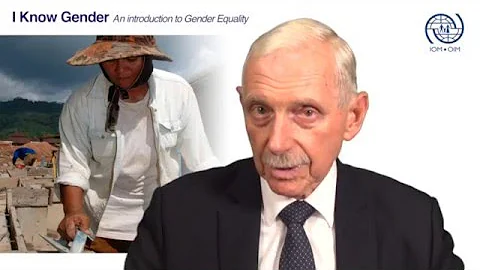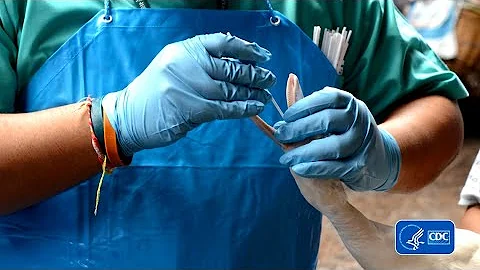Born as Placenta Sorry Yidujun 丨 Tong Zi
The body, hair and skin are received by the parents and do not dare to damage them. This is the beginning of filial piety.
However, with the development of modern medical technology, unfilial contemporary people not only often damage the body's hair and skin, but also produce a large amount of "human medical waste".
"Human medical waste" is a type of "medical waste", but it has a higher value than "medical waste".
Unlike used needles, protective clothing traveling through epidemic areas, and expired or contaminated drugs, "human medical waste" refers to inanimate or physiologically active organs, tissues, and human organisms that have been separated from the human body due to medical activities. .
Since "human medical waste" belongs to the category of pathological medical waste in the eyes of doctors and needs to be destroyed in time, in the eyes of some patients, it is an inseparable "part" of their own body, which inevitably leads to doctor-patient disputes due to differences in concepts.
So, should “human medical waste” be used as waste? Can the owner take it away?
"Human medical waste" that is comparable to a miracle drug
Garbage is a misplaced resource.
The United States, which is keen on "harvesting" the foreskin of baby boys, has long discovered the value of "human medical waste" and turned the foreskin into a business.
The foreskin of newborns can be cultivated into "human skin", which can be used to conduct safety testing of cosmetics instead of rabbits ; it also contains "human foreskin diploid cells", which have high "inducibility" and can repair disease Burns , skin cancer , diabetes , skin damage caused by bedsores ; even made into anti-aging cosmetics ...

The rabbit who lived a happy life from now on: Listen to me and thank you ~ because of you ~
The foreskin of a baby boy is so "scented" that medical institutions can make a profit by selling the foreskin tissue, plus the cost of surgery, it can be said that they get money from both ends. This has made some Americans who have been "circumcised" very angry. They have condemned circumcision as a PUA for men, which deprives men of their genital integrity and does not provide any financial compensation to the victims.
Note: Adult male foreskin does not have the high "inducing capacity" of baby boy foreskin, but it can be used as the first choice for autologous skin and mucous membrane transplantation (there will be color difference).
In contrast, China’s disposal of placenta, the most famous “human medical waste” in China, is much more reasonable. As long as the mother does not have infectious diseases, according to the "Reply on the Disposal of the Placenta after Delivery" issued by the Ministry of Health in 2005:
The placenta should belong to the mother after delivery. If a mother gives up or donates her placenta, it can be disposed of by a medical institution. No unit or individual is allowed to buy or sell placenta. If the placenta may cause the spread of infectious diseases, medical institutions should promptly inform the mother and dispose of it in accordance with the relevant provisions of the Law on the Prevention and Control of Infectious Diseases and the Regulations on the Management of Medical Waste.
Today, the placenta is a "by-product" of a mother giving birth to a child. There are no additional charges for "giving birth" to the placenta. The hospital cannot sell the placenta for profit, so there is no problem of "increasing revenue."
Human placenta is called " Zihe Che " in the famous Chinese encyclopedia "Compendium of Materia Medica". It has "the effects of calming the mind and nourishing blood, replenishing qi, replenishing essence, detoxifying, and replenishing blood", and is good for "fatigue, weight loss, and weakness." "It has miraculous effects. "Those who take it for a long time will have sharp ears and eyes, blackened beards, and longevity..." It is sought after by the people.
Modern biological and medical research has also found that the immunoglobulin "gamma globulin" in human placenta has the effect of enhancing the body's immunity; there are also 17 kinds of amino acids in the form of polypeptide , which also have the function of regulating immunity. The role of peptides, collectively referred to as "placental immunomodulatory peptides"; as well as various effective factors that promote growth and inhibit tumors, etc. However, its active ingredients will be inactivated after being exposed to high temperatures and were removed from the "Chinese Pharmacopoeia" in 2015.
In addition to "Zihe Che", some people have used "human medical waste" gallstones as a substitute for bezoar , and went to the hospital to purchase them at a price of 30 to 50 yuan/gram.
There was once an old Chinese medicine doctor who "saved" more than 300 grams of liver stones, then went to the hospital to remove them for surgery and took them all away.In an interview with the media, his attending physician suspected that the old Chinese medicine doctor wanted to use "self-produced stones" as medicine. Of course, the old Chinese doctor took away all the stones because he was afraid that his stones would be used as medicine.
Modern medicine believes that it is not advisable to replace bezoar with "human stones", but it is still possible to collect them yourself.
Souvenirs that are better than haute couture and limited edition
In China, as long as the patient himself does not have infectious diseases, "parts" such as foreskin, placenta, and gallstones that do not affect public order and good customs can be obtained through negotiation with the attending physician, but they are not allowed to be bought or sold.


In contrast, some foreign friends who find it difficult to make money or have long account balances turn other people's "human medical waste" into business and create the concept of "human pearls".
In 2001, the Saint-Maur auction house in the capital of the Netherlands auctioned a "big pearl" with a diameter of 4.2 centimeters at a high price of 6.351 million Dutch guilders (approximately 1.27 million yuan), creating a single-price pearl in the Netherlands at that time. The highest price ever paid for a bead at auction. And this oversized pearl is "human medical waste" - stone .

The animated picture is from the collection of my country's Stone Museum
Stones are not only valuable for their "large size", but also for their "good appearance".
In recent years, an Australian young man named Davis "produced" 11 marble-sized silver "human pearls" from his gallbladder , and was praised by the attending physician as "I have never seen such beautiful stones." , and "follow the doctor's advice" to have it appraised by a jeweler. Then someone offered $6.12 million (approximately 770,000 yuan) in an attempt to acquire Davis's "human medical waste."
Of course, there is also a market for “human medical waste” of different quality.
William Shatner, the star of the movie "Star Trek ", once "produced" a kidney stone during an operation, and sold it at auction for  25,000 (approximately 170,000 yuan) make a deal.
25,000 (approximately 170,000 yuan) make a deal.

William Shatner, who had not yet developed kidney stones
, and a decayed tooth of the late Beatles lead singer John Lennon, fetched a high price of 30,000 (approximately 200,000 RMB) at auction.

Compared with John Lennon's ordinary, even "a bit ugly" cavities, the wisdom teeth extracted by ordinary people may be born with the shape of a unique "artwork", and they have to be taken away for collection.

The tooth roots are like an octopus moving to "seduce people". The special edition

is rare to find and even more rare to find. The shocking hidden edition with rich artistic flavor
If you give up the ownership of your "souvenirs", they may also be collected by doctors and used as teaching tools. Or enter the Stone Museum and play a more important role.

"Human medical waste" that cannot be taken away
However, some friends cannot take away the wisdom teeth and foreskin after surgery as long as they are free of infectious diseases.

Doctors who don’t perform circumcision still ask, do you want to fry the foreskin?
Why can some people take away the same "human medical waste" while others can't?
This is due to different interpretations of the "Medical Waste Management Regulations" by different hospitals and different doctors.
Interpretation from the perspective of laws and regulations, human medical waste that is harmful, dangerous and contrary to public order and good customs must be handled uniformly by medical institutions or research institutions in accordance with the unified provisions of national laws. The "hazardousness and danger" here are determined by medical institutions. Some hospitals, except for the placenta that is "amnestied" by the Ministry of Health, classify almost all human body parts as medical waste and naturally do not allow them to be taken away.

Same wisdom teeth, different "hazards and dangers"
Patients who intend to collect them are recommended to ask if they can take them away before surgery.
Such as organs and stumps removed through surgery, they are all considered "toxic" by medical institutions. "Hazardous, dangerous" human medical waste, through communication with the patient or family, inform the whereabouts of the organs and residual limbs, and after obtaining consent, hand them over to the crematorium or incineration plant for centralized processing to protect public health safety.
And the human derivative "tumor" has more practical medical investigation value after surgery - pathological slice .
Pathology slices are an important basis for judging whether a tumor is benign or malignant. They are divided into two types: "rapid pathology (within 30 minutes)" and "conventional pathology (about two weeks)". Usually "regular slicing" is more accurate.
It is worth noting that "stillbirths" that look like human derivatives but have no civil rights were classified as "human medical waste" in the early days. In 2014, the "Newborn Safety Management System for Medical Institutions" issued by the General Office of the National Health and Family Planning Commission (Trial)", which removes stillbirths and stillborn infants from the category of medical waste.

Article 12 of the "Newborn Safety Management System in Medical Institutions (Trial)"
However, the right to deal with stillbirths usually belongs to the hospital, especially stillbirths and stillborn babies with infectious diseases, and individuals are strictly prohibited from handling them by themselves. When there are special needs (such as autopsy), storage requirements must be submitted to the hospital in advance to avoid unnecessary trouble.
So, have you ever "produced" human medical waste? Where have they gone?
[1] Yang Lixin, Cao Yanchun. Rights ownership and governance rules of human medical waste [J]. Politics and Law, 2006(1):8.
[2]Xie Jifeng. Foreskin skin transplantation to repair conjunctival sac stenosis A case[J]. Ophthalmology, 1995, 01:23-23.
[3] Yuan Xiangmin. Autologous free foreskin mucosal transplantation to repair oral mucosal defects[J]. Oral Medicine, 1989, 9(3):2.
[ 4] Li Yuying, Li Yingxia, Wu Shuhua, et al. Development of clinical-grade human fibroblast interferon [J]. Journal of Medical Research, 1982(10).
[5] Peng Liyi, Yang Daoli. Development of placental immunomodulatory peptides Identification and clinical application [J]. Chinese Journal of New Drugs and Clinical Medicine (Issue 3): 172-175.
[6] Zhang Yiqiu. "Talk about stones from pearls growing in the body"






















